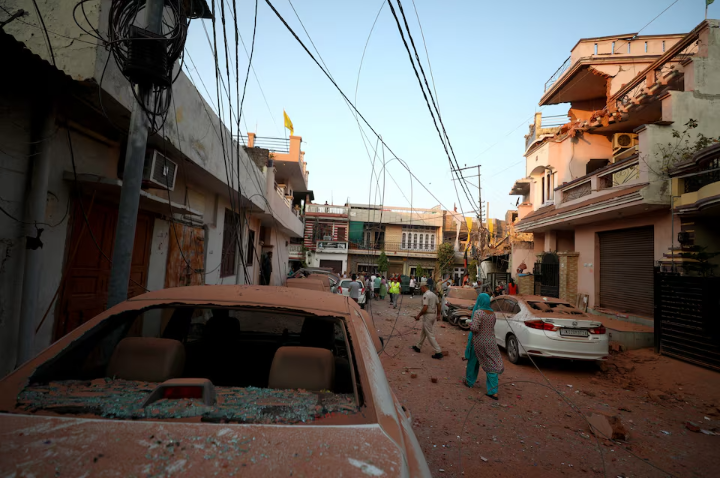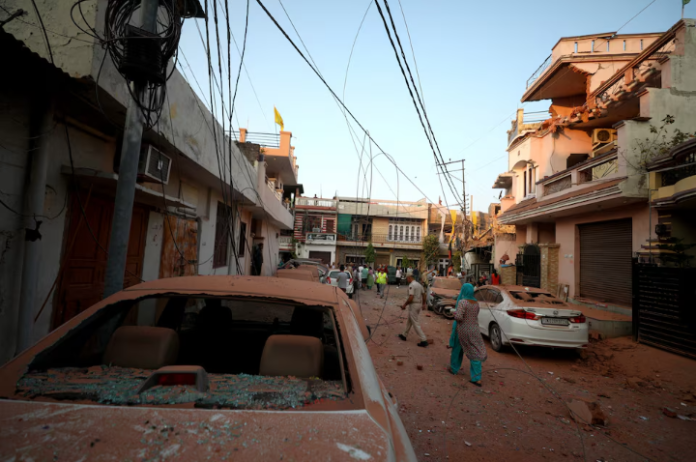In a dramatic and dangerous escalation, India and Pakistan exchanged direct military strikes on Saturday, igniting global concern over the possibility of a wider conflict between the nuclear-armed neighbors. The hostilities mark the most intense flare-up between the two nations since the 1999 Kargil War.
Airstrikes and missile attacks targeted each other’s military installations, prompting swift international reactions. U.S. Secretary of State Marco Rubio reached out to both sides, urging them to de-escalate and resume direct communication to avoid catastrophic miscalculations.
According to Pakistani military sources, their forces launched strikes on several Indian military bases—including a missile storage facility in northern India—in retaliation for prior Indian attacks. Meanwhile, India confirmed that several of its air force stations were targeted but reported minimal damage. Indian forces responded with counterstrikes.
The violence has already claimed civilian lives. Authorities in Jammu, part of Indian-administered Kashmir, reported five civilians killed amid the missile exchanges. Loud blasts and missile trails were witnessed in Indian cities like Amritsar and Jammu, sending residents fleeing and seeking shelter. “Jammu city has never experienced anything like this,” said Rajeev Gupta, a local resident whose brother was injured in the shelling.
Indian and Pakistani militaries both stated they remain on high alert. Indian Wing Commander Vyomika Singh noted that their operations were defensive in nature but warned that Indian forces would act with full force if Pakistan continues its offensives. “India is prepared but restrained,” she said, indicating readiness without aggression—unless provoked.
On Pakistan’s side, Foreign Minister Mohammad Ishaq Dar signaled a possible pause, stating, “If India stops here, we will consider stopping too.” However, Pakistan’s military warned that India had initiated the current wave of strikes and vowed to defend its territory.
The gravity of the situation heightened briefly when Pakistan’s military reportedly called a meeting of its top nuclear oversight body. The news sparked fears that the conflict could turn nuclear. But Defence Minister Khawaja Asif quickly clarified that no such meeting was scheduled, calling the nuclear threat “a very distant possibility.”
Despite calls for calm, tensions remain high. The conflict began after India blamed Pakistan for a recent attack on Hindu tourists in Kashmir, a claim Pakistan has denied. Since then, both sides have engaged in daily shelling, drone strikes, and missile launches across the volatile border.

The situation is dire not just militarily but also for civilians. Border towns are being evacuated, and panic buying has led to food shortages in some regions. Sirens have been installed in high-rise buildings in New Delhi, far from the border, showing the scale of nationwide alert.
Pakistan’s Saturday assault was named “Operation Bunyanun Marsoos,” a reference from the Quran meaning “a firm and united structure.” The choice of name signals the intensity and resolve behind the strike.
Analysts warn that the use of high-speed missiles and drones points to a rapid escalation in warfare capabilities. Pravin Sawhney, a defense expert and former Indian Army officer, remarked: “Operations have moved to the next level—this is no longer just cross-border fire.”
As the world watches closely, the hope remains that cooler heads prevail. But with over 50 people dead already and both militaries on edge, the threat of further devastation looms large.



